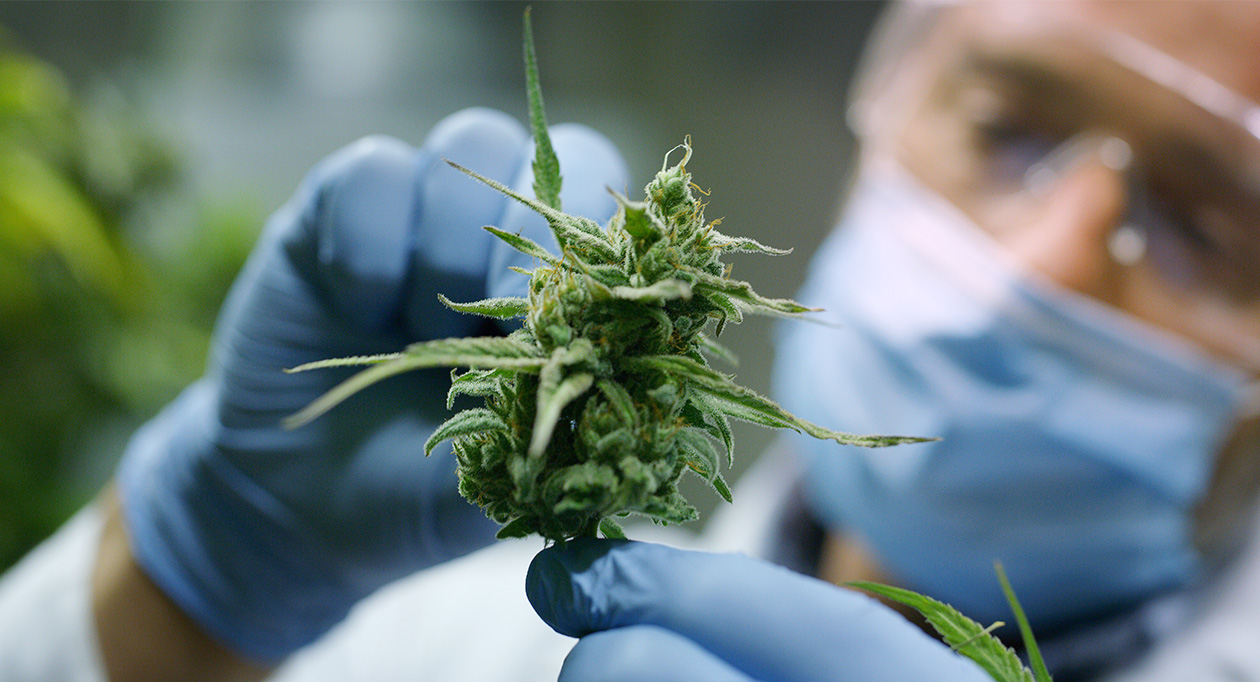This website uses cookies to offer you the best possible user experience. Cookies’ information is stored in your browser and performs functions such as recognizing when you return to our website or helping our team to understand which sections of the website you find most interesting and useful. More information in the privacy policy and cookie policy!
Fran Fernández Campos, PhD in Pharmacy and Director of R&D at Labiana Pharmaceuticals
Cannabis, more popularly known as marijuana, has been used since ancient times in ritual contexts for its psychoactive effect. Nowadays, its use is more recreational, due to its high cannabinoid content. In fact, it still appears today in the United Nations Single Convention on Narcotic Drugs of 1961, ratified by Spain in 1966.

Since then, various countries have been more permissive in terms of its recreational use. The Netherlands, for example, in the 1970s, trying to separate “hard drugs” from “soft drugs”, issued licenses for the sale of cannabis to so-called Coffee Shops. In Uruguay, consumption has been allowed since 2012, while in some US states it has been allowed since 2014, in Canada since 2018 and in Switzerland since 2023. Overall, the consumption data are remarkable since, according to European Monitoring Center for Drugs and Drug Addiction (EMCDDA), it is estimated that in Europe more than 27% of adults, between 15 and 64 years of age, have used cannabis some time in their lives, the vast majority by inhalation along with tobacco. Apart from this more recreational use, every day there is more scientific evidence regarding the medicinal potential of cannabis, which has led the United Nations to reclassify it, removing it from annex IV of the list of narcotic drugs. In addition, the number of articles listed in PubMed on cannabinoids grows exponentially every year, especially since the year 2000, counting more than 34,000 scientific articles available in this database and their possible therapeutic effect.
Cannabinoids and the endocannabinoid system
In cannabis, more than 500 different chemical compounds have been described within various families: terpenes, alkaloids, flavonoids, polyphenols and cannabinoids. The most studied compounds so far have been mainly two: the popular THC (D9-THC) and CBD.
Where does its medicinal use come from? The therapeutic effect of cannabinoids is mainly due to their interaction with the receptors of the endocannabinoid system (CB1 and CB2), although it has also been observed that they can interact with other types of receptors (such as TRPV1, voltage-gated sodium channels, receptors for the PPAR family). Precisely, endocannabinoid receptors are linked to the G protein and have a modulating activity on the activity of other receptor systems, which is why they have a wide variety of functions.
Therapeutic possibilities
Today there are already products on the market based on cannabinoids, of natural or synthetic origin. Apart from several drugs, which are available on the market, the possible therapeutic indications of cannabinoids are enormous. Among others, the EMA has granted orphan drug designation for CBD to various companies. Looking up the FDA and EMA clinical trials database, it can be verified how they work on the effect of cannabinoids for the treatment of Sturge-Weber Syndrome, obsessive-compulsive disorder, different phobias, bipolar syndrome, alcoholism, menstrual pain, fibromyalgia or schizophrenia, among others. In addition, looking up the scientific literature, there are more therapeutic options, such as anti-inflammatory, analgesic (for neuropathic pain, chronic pain and pain associated with cancer), antioxidant, antipruritic, bronchodilator, antispasmodic, sperm activity regulator, incontinence and urinary urgency, treatment of Parkinson’s and Alzheimer’s, insomnia, stress, psoriasis, atopy, etc.
Regulation at European level
This great therapeutic potential led drug regulatory agencies to act to facilitate the development of new products for the treatment of all these pathologies. A particular case is the option of classifying CBD as a food supplement. The European Food Safety Agency (EFSA) considers this compound as a “novel food”, however, it is not allowed to incorporate it into food supplements, pending the evaluation of its safety by this body. From this point of view, there is an apparent “legal gap” that has led to a proliferation of shops that allow you to buy CBD oils and other products for oral administration (gum, candies, etc.), with various concentrations and without control by the health authorities. Pending this consideration of a well-established or traditional use, the HMPC has published a question and answer document in 2023 with the intention of clarifying the regulatory requirements for the registration of cannabis-based medicinal products. In fact, EMA has an established legal framework for the registration of medicines based on medicinal plants, such as the quality guide, a guide for the preparation of the Drug Master File (DMF) of plants and a guide to specifications for this type of product. Therefore, the great therapeutic potential of the endocannabinoid system, through the compound from cannabis or synthetic derivatives, opens up a wide range of therapeutic possibilities. Pharmaceutical companies and research organizations are aware of this enormous potential and EMA seems to accompany these organizations for the benefit of patients. In this way, we have entered the era of medical cannabis and, perhaps, this will serve to open the way to the decriminalization of other drugs with therapeutic potential in other areas.








